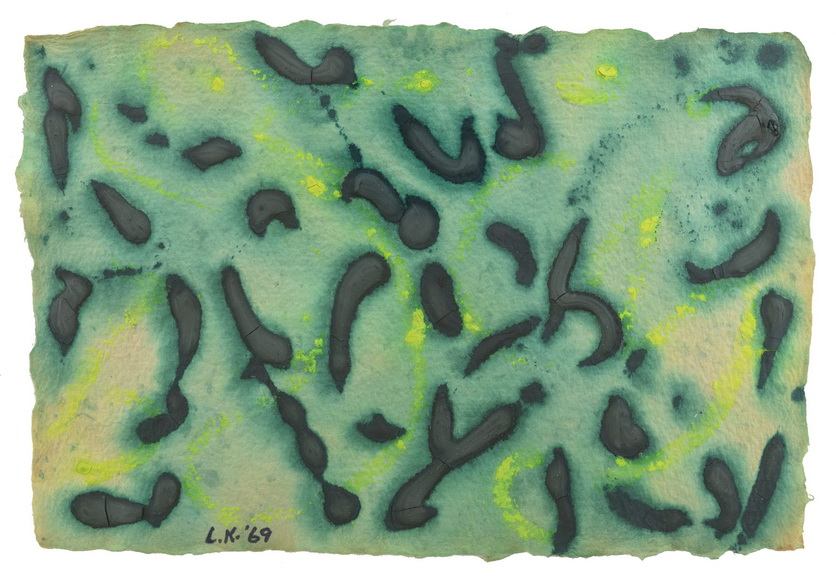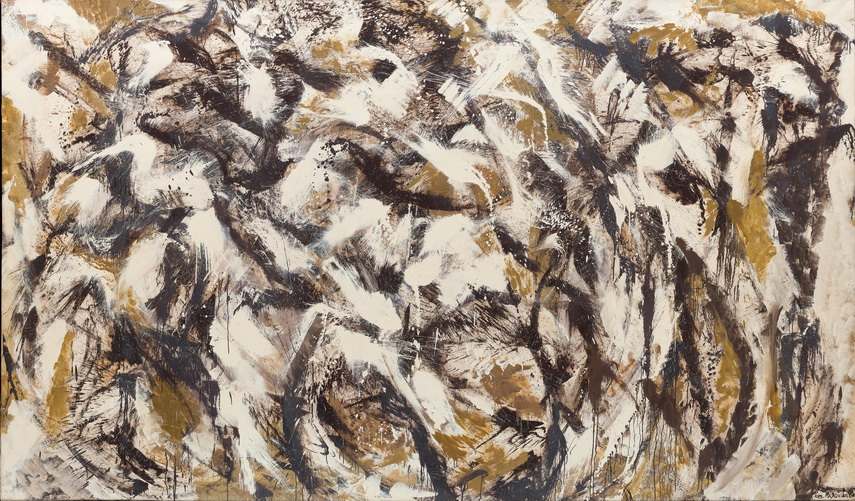[ad_1]
Modern art history brought not only collectives, groups or specific collaborations, but the art couples as well. Until the beginning of the 20th century, there were barely two artists living together, and even if that was the case, the male partner would always overshadow the female one, meaning that the art world was quite male-dominated. During the 1970s, the feminist artists demanded this misogynist interpretation be changed, so various women’s practices became articulated in regards to the social circumstances of the period during which they were realized.
The case of Lee Krasner, who was an astonishing Abstractionist and the wife of Jackson Pollock, still captures the attention of various scholars and is widely debated. She had an incredible and curious mind, and she was willing to overcome constraints of any genre through a continuous learning process which manifested in her paintings.
Although the overlapping with Pollock’s practice naturally happened, Krasner made an authentic and powerful body of work, soon to be on view at The Barbican in the first European retrospective of the artist.

The Domains of A Great Modernist
In 1928, Lee Krasner started attending the National Academy of Design and was inspired by the opening of MoMA the following year. However, she became more actively involved with arts after joining the School of Fine Arts run by the famous Bauhaus master Hans Hofmann, and during the 1940s she was a member of the American Abstract Artists where she befriended the artists such as Willem de Kooning and Franz Kline.
Krasner met and eventually married Jackson Pollock, who was a leading proponent of Abstract Expressionism. The couple borrowed money from art dealer and collector Peggy Guggenheim to purchase a farmhouse, where Krasner worked in the living room and upstairs bedroom while Pollock used a barn as a studio. After Pollock’s untimely death in 1956, she started producing large scale un-stretched canvas tacked to the wall (such as Umber and Primary series paintings) which is considered as her most celebrated work.

The Selection of Works
The installment in London will include almost one hundred works encompassing early self-portraits; expressive charcoal drawings; original photographs of her design propositions for department store window displays made during the war; as well as her widely acclaimed Little Image paintings from the 1940s.
Alongside these works, the installment will also feature recycled collages (made from pieces of earlier works), a selection of her most impressive large-scale abstract paintings, and rare photo and film documentation from the period.

Lee Krasner at The Barbican
Living Colour is made possible through numerous loans gathered from international public and private collections, many of them being displayed in Europe for the first time. Barbican’s Head of Visual Arts Jane Alison expressed her excitement with the upcoming exhibition:
We are thrilled to be staging Lee Krasner: Living Colour. Despite featuring in museum collections around the world and being one of the few women to have had a solo show at New York’s Museum of Modern Art, in1984, Krasner has not received the recognition that she deserves in Europe, making this an exciting opportunity for visitors here to experience the sheer impact of her work.
Lee Krasner: Living Colour will be on display at the The Barbican Art Gallery in London from 30 May until 1 September 2019.
Featured image: Lee Krasner – Palingenesis, 1971. Pollock Krasner Foundation; Lee Krasner at the WPA Pier, New York City, where she was working on a WPA commission, c. 1940. Photo Fred Prater. Lee Krasner Papers, c.1905-1984.
[ad_2]
Source link

